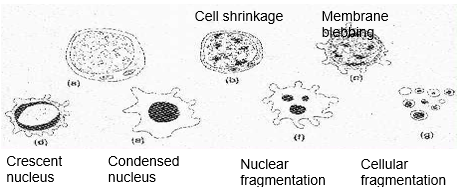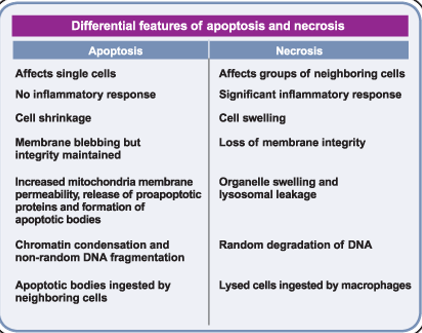DDT - Oncology
1/20
There's no tags or description
Looks like no tags are added yet.
Name | Mastery | Learn | Test | Matching | Spaced |
|---|
No study sessions yet.
21 Terms
What are the 2 main stages of cell cycle?
Interphase and cell division stage
What are the 3 subphases of interphase during cell cycle?
G1 (Cell acts as normal), S (DNA replicates) and G2 (Cell prepares for division)
Difference between mitosis and cytokinesis
Mitosis is division of nucleus whilst division of cytoplasm is cytokinesis
Role of cyclins and cyclin-dependent kinases in cell cycle
Cyclins and cyclin-dependent kinases both work together to regulate cell cycle processes, either
5 different fates a cell can undergo?
Cell division / proliferation, senescence (response to stress or damage, preventing replication of unhealthy cells, still metabolically active however) differentiation (cell specialisation), apoptosis (Death) and transforming to a cancerous tumour
Ways to measure cell proliferation?
Flow cytometry and cell cycle-associated protein assays. Nucleoside analogue incorporation assays (checks incorporated substances in DNA) as well as performing cell counts as well as metabolic activity assays.
3 types of cell death
Necrosis (typically by trauma and is not planned), apoptosis (when cells are killed in a programmed manner and is planned, ATG-related genes) and autophagy (where cells eat themselves. Recycles parts of the cell)
Steps of apoptosis
Cell shrinks down (cytoplasm condensed and loss of water / ions), plasma membrane becomes ruffled (membranes blebs and may burst), stops metabolic processes, organelles now shrink, DNA now fragments, then the cell fragments into apoptotic bodies which are digested by phagocytosis

What enzymes caused apoptosis?
Caspases, which are produced in inactive precursors, called procaspases
What are the 2 types of procaspases
Procaspases (inactive caspases) have 2 types: initiator procaspases cleave executioner procaspases, which regulate cell death
Extrinsic and intrinsic pathways of apoptosis
Extrinsic pathways are caused by an immune response if strange cell activity is detected
Intrinsic pathways are caused if a cell has been damaged beyond repair by something external
Ways to detect apoptosis
Plasma membrane shape and integrity, DNA fragmentation, caspase activation and mitochondrial membrane potential. Staining cells can be used as well, based on the nuclear morphology of cells
Ways to detect necrosis
Flow cytometry, detecting intracellular enzymes
Difference between apoptosis and necrosis

How can cancer develop?
It can either be developed through inheritance (like autosomal dominant and autosomal recessive) as well as carcinogens.
Characteristics of cancer cells (3 max)
They proliferate rapidly, invade local tissues and spread (death of the patients), self sufficient in growth signals, insensitive to death signals, Stimulate local angiogenesis, evade apoptosis, evade immune system, genomic instability: they acquire many mutations.
What is an oncogene and a proto-oncogene?
An oncogene is an abnormal gene that accelerates proliferation. Proto-oncogenes are oncogenes that encourage normal cell growth
What are the tumour suppression genes roles? And what are 2 examples of tumour suppression genes?
To stop cell proliferation, by producing a protein. When mutated it will stop inhibiting cell proliferation, and it will become uncontrolled, leading to development of tumours. 2 examples are p53 and retinoblastoma protein
Treatments for cancer?
Surgery is useful if the tumour is not connected to anything vital, like any organs. Radiotherapy and chemotherapy are usually otherwise used as well, typically alongside surgery. Other treatments are immunotherapy, hormone therapy, stem cell transplant as well as a few other treatments.
What are some of the decisions required for giving a patient treatment plan for cancer
Type of the cancer, stage and grade of cancer: High-grade and metastatic cancer require more aggressive treatment, biomarkers testing: For targeted therapy, patient’s overall health: If a patient has a CVS, kidney, or liver disease this is likely to affect the treatment regimen, treatment guidelines: Combination of therapy is based on research and clinical evidence, side effects, patient preference on some occasions. Plan has to fit around patient too, if they can manage the treatment.
What is the most common type of intra-ocular cancer?
Uveal melanoma, caused by pigmented melanocytes of the iris, ciliary body and choroid.